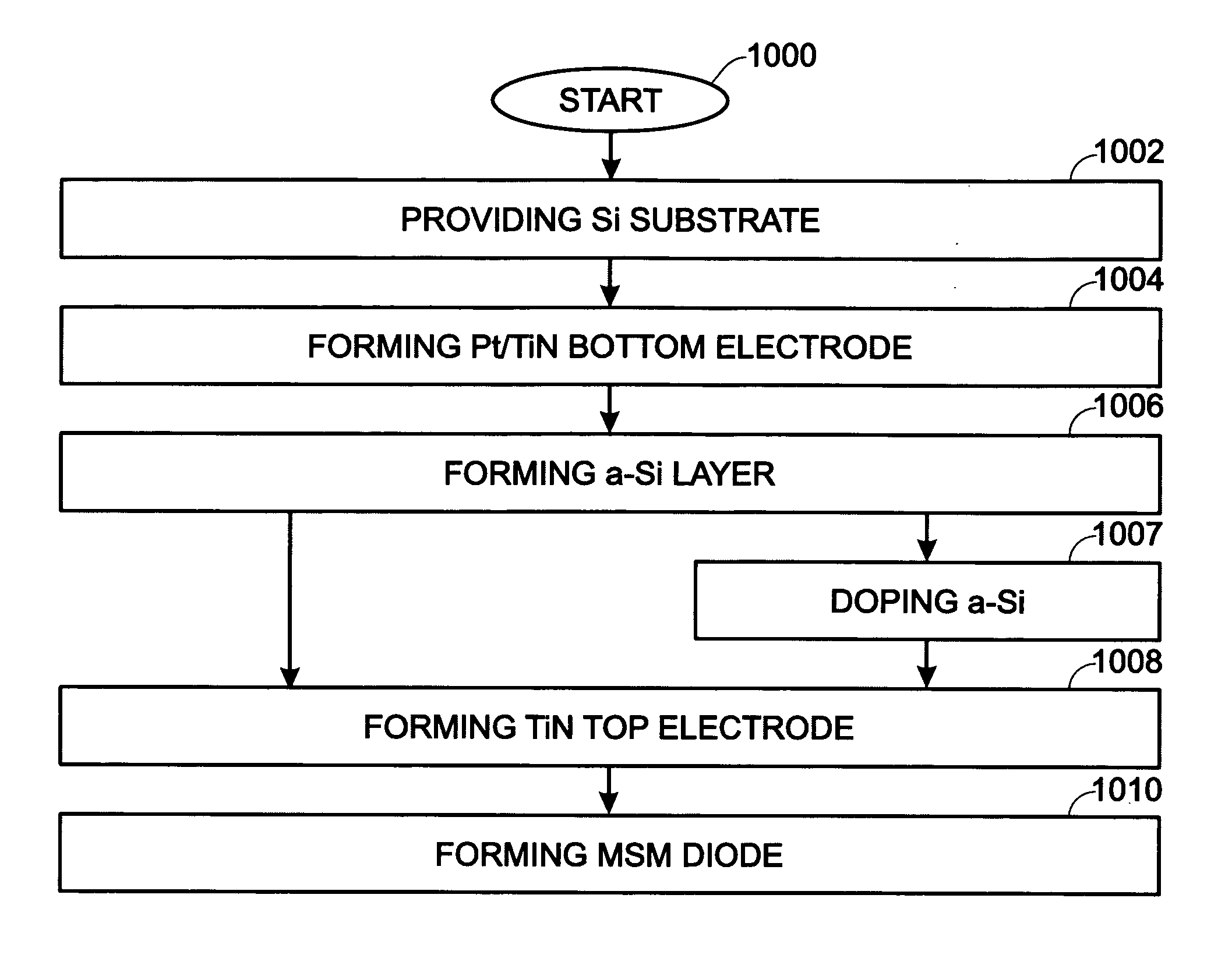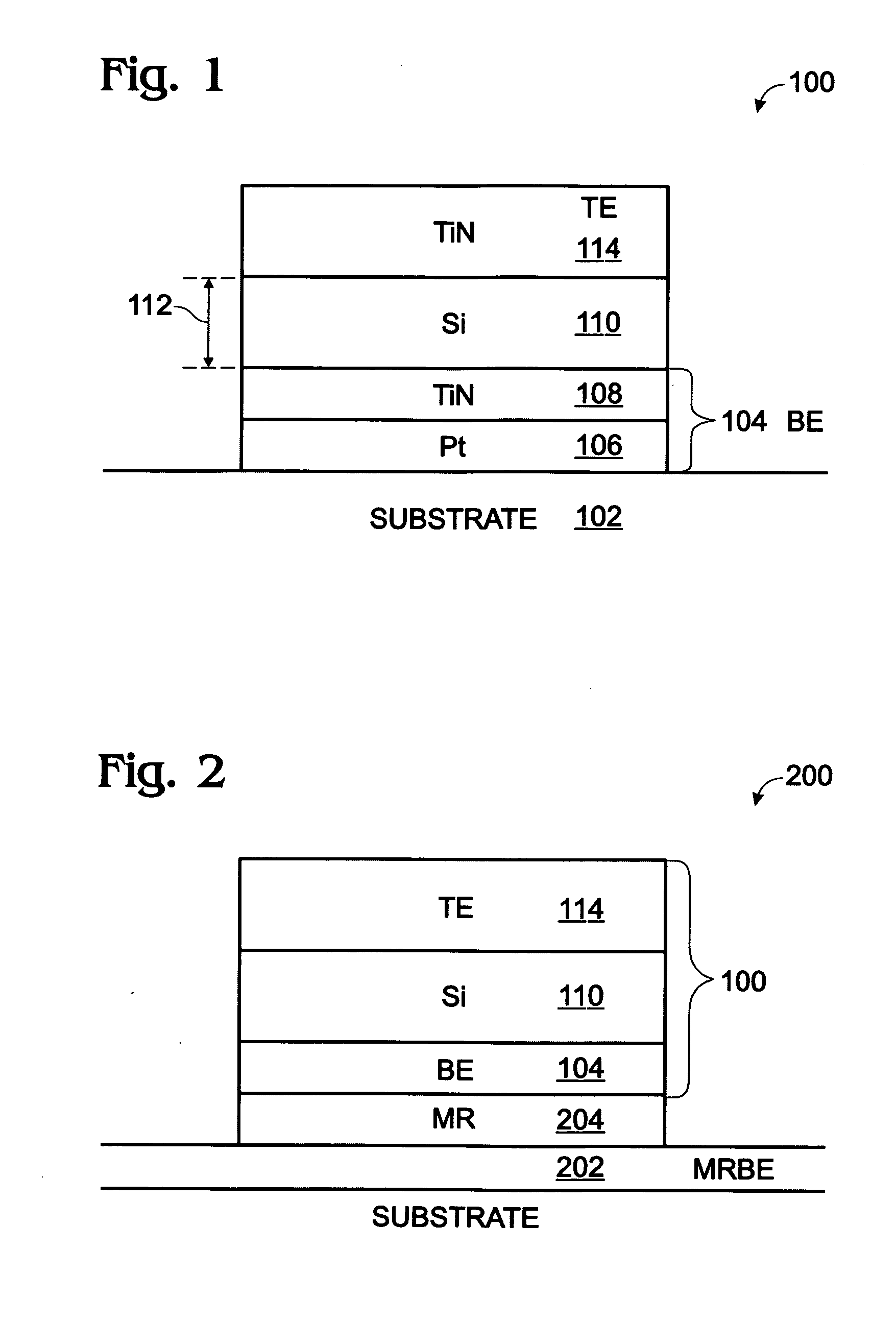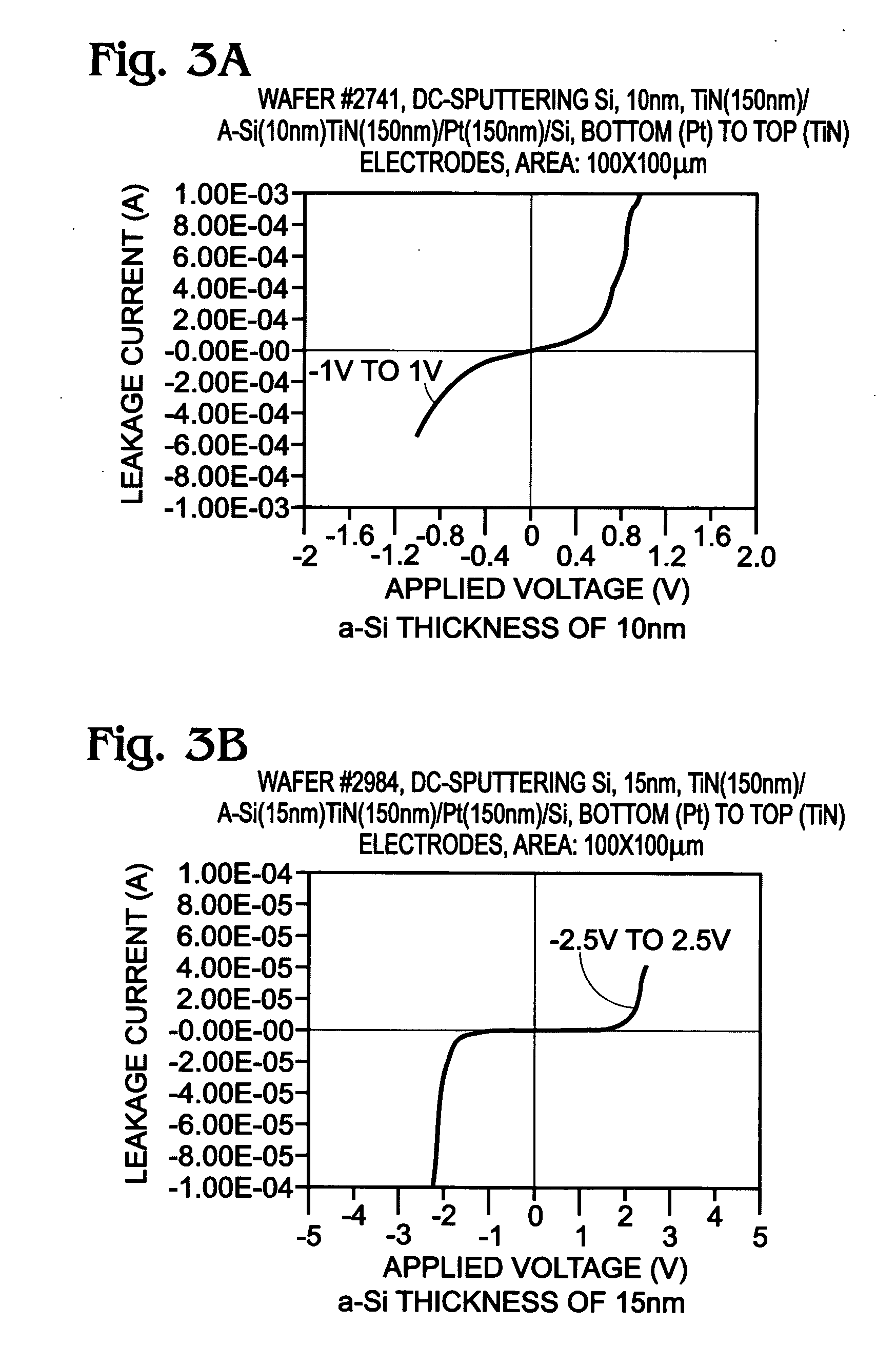Metal/semiconductor/metal (MSM) back-to-back Schottky diode
a back-to-back schottky diode technology, applied in semiconductor devices, digital storage, instruments, etc., can solve the problems of many conventional cross-point resistor memory arrays suffering from read disturbance problems
- Summary
- Abstract
- Description
- Claims
- Application Information
AI Technical Summary
Benefits of technology
Problems solved by technology
Method used
Image
Examples
Embodiment Construction
[0033]FIG. 1 is a partial cross-sectional view of a metal / semiconductor / metal (MSM) back-to-back Schottky diode fabricated from a silicon (Si) semiconductor. The MSM diode 100 comprises a Si substrate 102, and a bottom electrode (BE) 104 with a Pt layer 106 overlying the substrate 102, and a TiN layer 108 overlying the Pt layer 106. An amorphous Si (a-Si) semiconductor layer 110 overlies the bottom electrode 104. The a-Si semiconductor layer 110 has a thickness 112 in the range of 10 to 80 nanometers (nm). A TiN top electrode (TE) 114 overlies the a-Si semiconductor layer 110.
[0034] The a-Si semiconductor range of thickness may be considered unconventional, and even unexpected. As described in more detail below, the optimal device performance is dependent upon a thickness that must be balanced against considerations of threshold voltage, breakdown voltage, and on / off current ratio.
[0035] As described in more detail below, generally the MSM diode 100 has a threshold voltage in the ...
PUM
 Login to View More
Login to View More Abstract
Description
Claims
Application Information
 Login to View More
Login to View More - R&D
- Intellectual Property
- Life Sciences
- Materials
- Tech Scout
- Unparalleled Data Quality
- Higher Quality Content
- 60% Fewer Hallucinations
Browse by: Latest US Patents, China's latest patents, Technical Efficacy Thesaurus, Application Domain, Technology Topic, Popular Technical Reports.
© 2025 PatSnap. All rights reserved.Legal|Privacy policy|Modern Slavery Act Transparency Statement|Sitemap|About US| Contact US: help@patsnap.com



